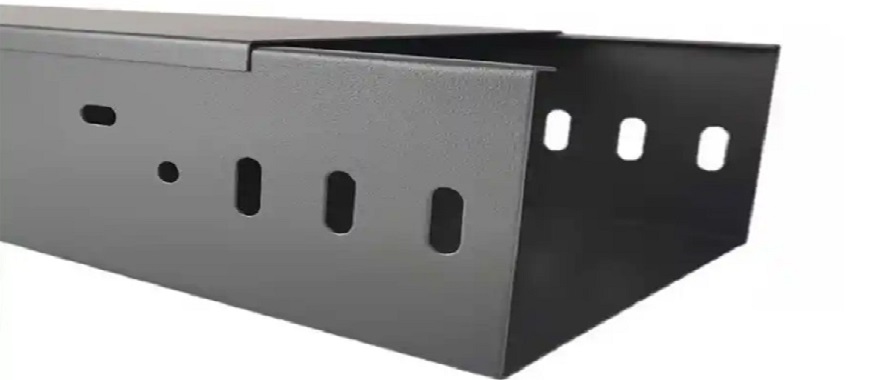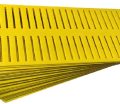
Cable tray systems are essential for organizing and supporting electrical cables in industrial and commercial installations. They provide a structured way to manage cables while ensuring safety and accessibility. Understanding cable tray loading classes is crucial for designing systems that meet specific load requirements and maintain structural integrity. Proper knowledge of these classes allows for accurate planning, reducing risks of overloading and potential failures. Topics such as load testing, weight charts, and cable tray support distances are important for ensuring the system operates efficiently. Additionally, class e cable tray loading is a key consideration for heavy-duty installations, requiring special attention during design and installation. These factors ensure compliance with standards and promote long-term reliability.
What Are Cable Tray Loading Classes?
Cable tray loading classes define the load-bearing capabilities of cable tray systems under specific conditions. These classes are essential for ensuring that systems can safely support the combined weight of cables, accessories, and environmental loads. By categorizing trays based on their load capacities, these classes help engineers and designers make informed decisions for project requirements.
Role in System Design
- Structural Integrity: Cable tray loading classes guide the selection of systems capable of handling designated loads without compromising safety.
- Optimal Performance: Proper classification ensures that trays function efficiently, avoiding overloading or structural failure.
- System Compatibility: Specifying the correct loading class ensures the tray aligns with the span length and cable weight demands.
Governing Standards
Standards such as NEMA provide detailed guidelines for cable tray loading classes. These include:
- Construction and Testing: Ensuring materials and assembly meet load-bearing expectations.
- Installation Recommendations: Defining support distances and splicing methods to maintain class-specific performance.
- Environmental Considerations: Including resistance to snow, wind, and ice loads.
Compliance with these standards ensures that cable tray systems deliver reliable performance and meet safety regulations.
Advanced Cable Tray Production Line Technology Explained
Key Factors Determining Cable Tray Loading Classes
Load Testing Standards and Methods
Load testing is crucial to categorize cable tray loading classes accurately. Testing ensures the tray can withstand specified loads over a set span length, mimicking real-world conditions. The process includes:
- Simple Beam Tests: Trays are supported at both ends and loaded incrementally to assess their maximum capacity.
- Environmental Simulation: Additional factors like wind and ice loads are incorporated to replicate actual usage scenarios.
Key Considerations:
- Span Length: Common spans include 8 ft, 12 ft, and 20 ft. Longer spans require stronger trays with higher weight capacities.
- Weight Capacity Categories: Categories such as A, B, and C define how much weight per foot a tray can support. For example, a Category C tray supports heavier loads over the same span compared to Category A.
Examples of Load Combinations:
- Light-Duty Systems: 50 lbs/ft on an 8 ft span.
- Heavy-Duty Systems: 200 lbs/ft on a 20 ft span.
By understanding these combinations, designers can select appropriate trays for their specific projects.
Cable Tray Support Distance
The distance between supports significantly impacts the load capacity of a cable tray. Proper support placement ensures the tray remains stable under load.
Recommendations:
- Span Specifications: Support distances should align with the tray’s designated span length to maintain structural integrity.
- Splice Positioning: Joints should ideally be placed 1/4 of the span length from the nearest support for even load distribution.
Advantages of Proper Support:
- Prevents sagging or overloading.
- Extends the tray’s service life.
- Enhances safety during operation.
Cable Tray Weight Chart and Its Applications
Weight charts provide a visual reference for cable tray loading classes, detailing how much weight a tray can bear under specified conditions. These charts simplify the selection process and ensure compatibility with project requirements.
Understanding the Cable Tray Loading Classes Chart
Weight charts categorize trays based on span length and load capacities, ensuring accurate system planning. To interpret these charts:
- Identify the tray type and material.
- Locate the span length and corresponding weight capacity.
- Cross-reference with environmental load factors to verify suitability.
Applications:
- Project Planning: Engineers use charts to design systems that match load demands.
- Installation Guidelines: Charts provide clear data for contractors to ensure compliance with specifications.
- Maintenance Planning: By knowing weight limits, overload risks can be mitigated during system upgrades.
Environmental Considerations:
- Snow Loads: Additional weight from snow impacts load capacity in outdoor systems.
- Wind Resistance: Trays exposed to high winds require stronger support systems.
- Ice Accumulation: Cold climates necessitate accounting for ice weight when planning systems.
Weight charts, combined with an understanding of cable tray loading classes, are essential for designing safe and efficient systems that meet project needs.
Cable Tray Feeder Installation Tips for Optimal Performance
Cable Tray Installation Standards and Guidelines
Adhering to proper installation standards is essential for ensuring the safety and efficiency of cable tray systems. Guidelines for cable tray loading classes provide a framework for determining load capacities and maintaining structural integrity.
Ensuring Compliance with Installation Standards
Compliance with installation standards ensures that cable tray systems operate effectively and meet safety requirements. Key guidelines include proper handling, storage, and installation practices.
Factors Influencing Compliance:
- Straight Section Length: Matching support spans with the tray’s straight section length prevents overloading and structural failure.
- Splice Positioning: Placing splices at one-quarter span from supports ensures even weight distribution and enhanced stability.
- Load Calculations: Accounting for all environmental loads, such as snow, ice, and wind, is critical to avoid exceeding tray capacities.
Benefits of Following Installation Standards:
- Enhanced Safety: Proper installation prevents system failures, reducing risks to personnel and equipment.
- Prolonged Lifespan: Adhering to standards reduces wear and tear, extending the service life of cable trays.
- Cost Efficiency: Avoiding improper installation minimizes repair and replacement costs over time.
Examples of Common Issues Resolved by Compliance:
- Sagging Trays: Occurs when spans exceed design limits.
- Overloaded Systems: Results from failing to account for environmental factors during planning.
- Improper Support Placement: Causes uneven weight distribution and instability.
Free Cable Tray Loading Classes Resources
Accessing free resources like guides and PDFs can simplify the process of understanding cable tray loading classes. These materials often include charts, installation tips, and compliance guidelines.
Advantages of Using Free Resources:
- Comprehensive Data: Guides include weight charts and span recommendations tailored to various environments.
- Easy Access: Digital PDFs provide convenient, on-demand references for engineers and contractors.
- Practical Examples: Case studies highlight common scenarios, offering actionable insights for real-world projects.
Popular Types of Free Resources:
- Load Testing Guides: Explain how to determine cable tray loading classes through standardized testing methods.
- Installation Manuals: Provide detailed instructions for proper handling, storage, and support placement.
- Weight Capacity Charts: Help users select the correct tray system for specific applications.
These resources enable professionals to design systems that adhere to cable tray loading classes without additional costs.
How to Plan Effective EMC Cable Tray Systems
Class E Cable Tray: A Detailed Overview
Class E cable tray is specifically designed for heavy-duty installations, offering superior load and span capabilities compared to other classifications.
Definition of Class E Cable Tray
Class E cable tray refers to systems built to withstand higher load demands over longer spans. It is characterized by:
- Robust Construction: Uses reinforced materials to handle substantial weights.
- High Load Capacity: Often supports up to 300 lbs/ft over spans of 20 feet or more.
- Environmental Resilience: Suitable for use in areas with heavy snow, ice, or wind loads.
Applications of Class E Cable Tray
Class E cable tray loading is ideal for installations where high structural strength and reliability are necessary. Common applications include:
- Industrial Facilities: Used to manage heavy power cables in manufacturing plants.
- Data Centers: Supports large volumes of cables in complex IT setups.
- Outdoor Systems: Handles environmental loads in outdoor power distribution systems.
Benefits of Class E Cable Tray:
- Durability: Withstands challenging environments without frequent maintenance.
- Scalability: Accommodates additional loads as systems expand.
- Safety: Provides a secure solution for critical infrastructure projects.
Importance of Adhering to Standards for Class E Cable Tray
Ensuring compliance with standards during installation is crucial for maintaining the performance of Class E cable tray systems. Key considerations include proper alignment with cable tray loading classes, which define the tray’s ability to handle specific loads and environmental conditions. This alignment ensures the system can support designated weights while maintaining structural integrity. Proper support placement, load calculations, and adherence to safety guidelines are essential to prevent overloading or failure. By following these practices, Class E cable tray systems can deliver reliable and efficient performance in demanding installations.
- Proper Support Placement: Prevents sagging and ensures even weight distribution.
- Accurate Load Calculations: Accounts for all weight factors, including environmental conditions.
- Regular Inspections: Identifies potential issues before they lead to system failures.
Adherence to standards ensures the long-term success of Class E cable tray installations.
Cable Tray Loading Classes PDF and Other Resources
Using cable tray loading classes PDFs provides a reliable and efficient way to plan, design, and maintain cable tray systems.
Benefits of Using Cable Tray Loading Classes PDFs
- Detailed Information: PDFs often include comprehensive charts and guides for load capacity and span selection.
- Portability: Digital files can be accessed on-site or during project planning meetings.
- Standard Compliance: Official documents ensure adherence to NEMA and other governing standards.
How PDFs Simplify Load Calculations
Cable tray loading classes PDFs provide pre-calculated data for various tray configurations, making it easier to design systems:
- Load Capacity Tables: Show maximum weights based on span lengths.
- Environmental Adjustments: Include guidelines for accounting for snow, ice, and wind.
- Material Recommendations: Highlight the best options for specific project conditions.
Recommendations for Reliable Sources of PDFs
To ensure accuracy, PDFs should be obtained from trusted providers like GangLong Fiberglass, which offers resources adhering to industry standards. Reliable PDFs include:
- NEMA Compliance Guides: Detail construction and testing standards for cable tray systems.
- Installation Manuals: Provide step-by-step instructions for proper setup.
- Load Charts: Offer a visual reference for determining the correct cable tray loading classes.
These resources streamline planning processes and promote safe, efficient installations.
FAQs about Cable Tray Loading Classes
Cable trays are classified based on their material, load capacity, and design. Material classifications include metallic, non-metallic, and composite trays, with each type suited for specific environments. Load capacity classifications align with cable tray loading classes, such as light-duty, medium-duty, and heavy-duty systems. Design-based classifications include ladder, perforated, solid-bottom, and wire mesh trays. Ladder trays are ideal for power cables, while wire mesh trays are often used for data and communication cables. These classifications guide engineers in selecting the appropriate tray for electrical or data cable management, ensuring safety and efficiency. It is important to reference guidelines like NEMA standards to ensure compliance with industry classifications.
To calculate cable tray loading, first determine the total weight of cables and accessories per unit length. Consider environmental factors like snow, ice, and wind that may increase the load. Use weight charts provided by manufacturers or industry standards, such as NEMA or NEC guidelines, for reference. Divide the load by the tray’s span length to verify it meets the specified cable tray loading classes. Always include a safety factor to prevent overloading. Proper calculation ensures the system’s structural integrity and avoids costly repairs or system failures.
The National Electrical Code (NEC) outlines guidelines for the use of cable trays under Article 392. It specifies installation practices, material requirements, and safety standards for cable trays. These codes ensure that cable trays are properly supported, grounded, and spaced to minimize risks. Article 392 also details the requirements for securing cables within trays, protecting them from damage or interference. Adhering to the NEC code for cable trays is mandatory in many jurisdictions to ensure compliance with electrical safety standards.
Yes, many tray cables are rated for Class 1 Division 2 hazardous locations. These ratings indicate that the cables are designed to operate safely in environments with the potential for explosive gases or vapors. The cables must meet specific insulation and jacket material requirements to prevent ignition sources. Check the manufacturer’s specifications and certifications to confirm the cable’s suitability for Class 1 Div 2 conditions. Proper cable selection and installation in hazardous locations are critical for maintaining safety and compliance with regulatory standards.

As the editor of GangLong Fiberglass, I have years of experience and in-depth research, focusing on cable tray products, fiberglass solutions, and grille systems. I incorporate years of industry insights and practical experience into every content, committed to promoting the progress of the industry. At GangLong Fiberglass, my commitment is reflected in every product, from innovative cable trays to durable fiberglass solutions and sturdy grille systems. As an authoritative voice in the industry, my goal is to provide valuable information to professionals and businesses and promote forward-looking solutions.


